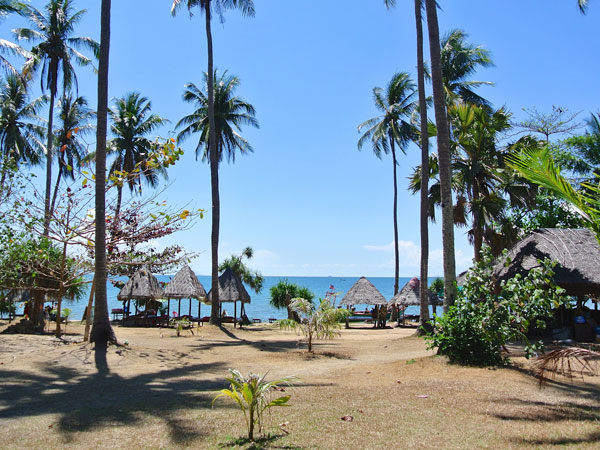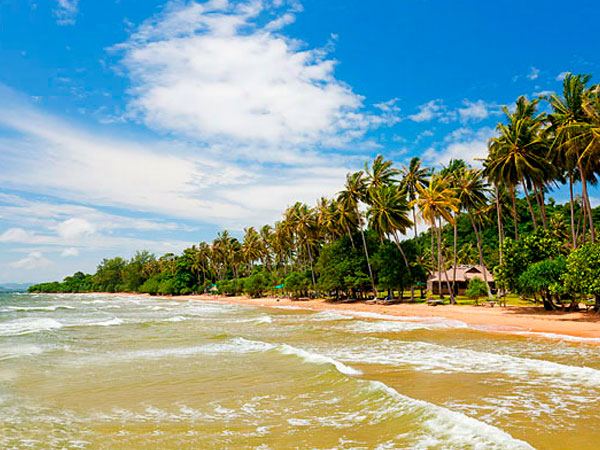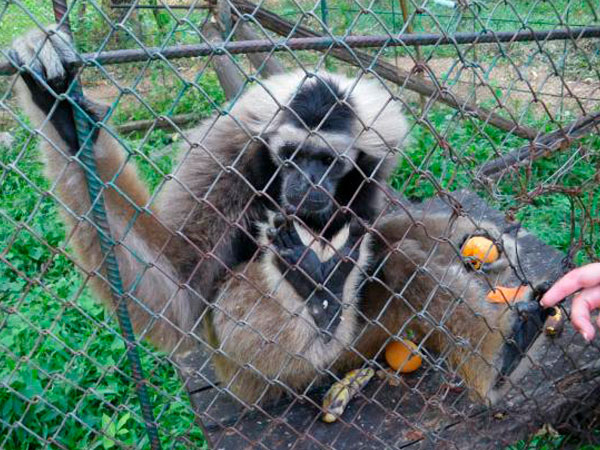Kep Beach is one of the most frequented spot in Kep, Cambodia. It is a 1-kilometer stretch of beach flanked by several guest houses, restaurants and shops. Being the main part of Kep City, it is frequented both by locals and by tourists.
While it does not naturally have white sand, it is regularly filled with powder-white sand from other beaches in Sihanoukville. At the far end of the beach is a promenade and the Sela Cham P’dey, a statue that is said to depict a fisherman’s wife waiting for her husband’s return from the sea.
Kep Beach is also just a few kilometers from the Crab Market, another favorite destination in Kep.
Kep was Cambodia's top seaside destination until eclipsed in the 1960s by Sihanoukville (and, soon after, decades of civil war). The town is full of ruined shells of old villas, destroyed in the Khmer Rouge days and during the subsequent Civil War and stripped down by the leaving Vietnamese army.
Today's Kep has recently become established as a Khmer holiday spot and is slowly being rediscovered by travelers. The once very poor Kep beach is now being filled up with snow white sand from Otres Beach and is extended to 50m, still the main beach is located at the idyllic Koh Tonsay (Rabbit Island, 20min by long tail boat), just off the coast.
The charm of this coastal resort lies in its peacefulness, its National Park, and its seafood.
A single, kilometer long crescent of sand near the tip of the Kep peninsula. Dining platforms and seafood vendors line the road behind the beach. Busy on weekends but often deserted during the week. The road through Kep traces the coastline to the beach and then circles back on itself. Cars and vans must pay admission to drive the loop (2500R - 5000R). Motorcycles and pedestrians are free. Be aware that the loop is an one-way street and the police do occasionally enforce the law, levy fines against violators.












